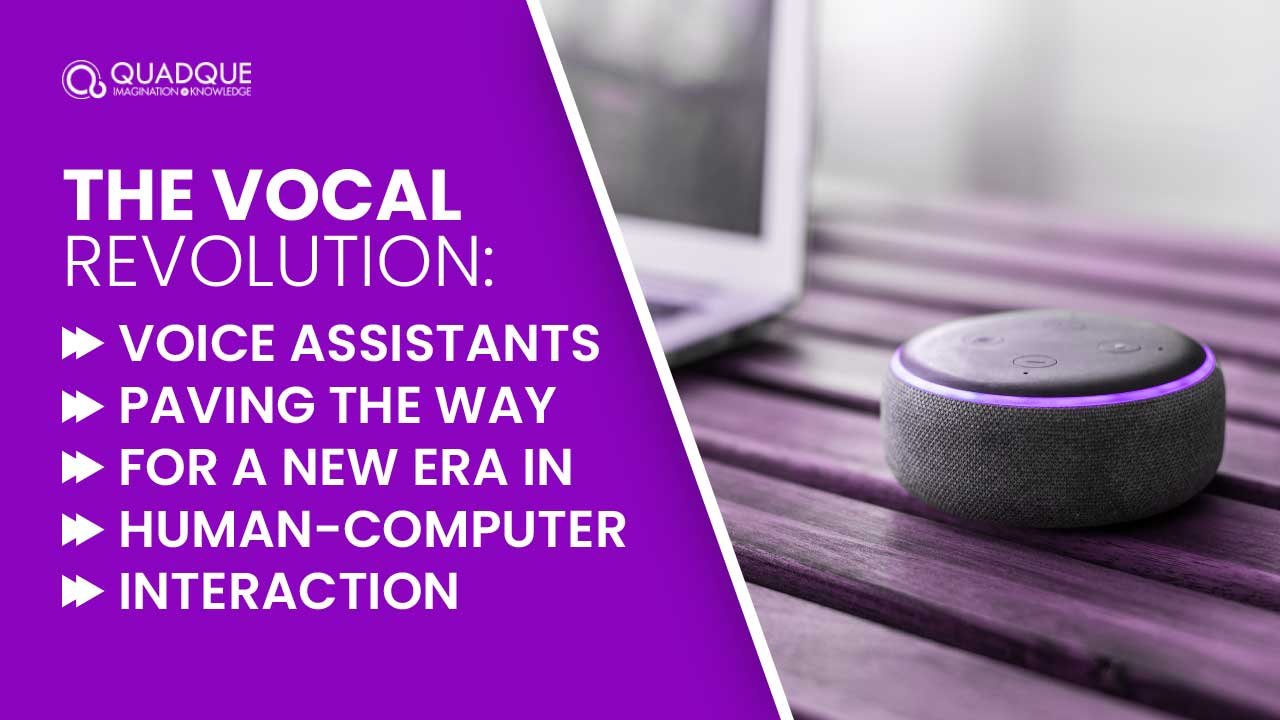
The Future of Human-Computer Interaction
Overview:
Enter the dawn of the Vocal Revolution, where the symphony of human-computer interaction is conducted through voice-activated devices and transformative technologies. This journey unveils the intricacies of conversational AI, the natural language processing that breathes life into voice command technology, and the interactive voice response shaping the future of user interfaces. Join us on this exploration of vocal interfaces, where the harmony of technology meets the melody of human expression.
1. Voice-Activated Devices: The Maestros of Vocal Interaction
Explore the maestros of vocal interaction – voice-activated devices that bring technology to life through spoken words. Analogize these devices to conductors orchestrating a digital symphony, where each command resonates with precision, efficiency, and a touch of futuristic magic.
2. Conversational AI: The Art of Digital Discourse
Delve into the art of digital discourse with conversational AI, a technology that transforms machines into eloquent conversationalists. Use metaphors to depict this AI as the artists painting a landscape where machines understand, respond, and engage in natural human conversations.
3. Natural Language Processing: Sculpting Words into Commands
Witness the sculpting of words into commands through natural language processing, akin to an artist molding clay into a masterpiece. Illustrate how this technology breathes life into voice commands, allowing users to communicate with devices in a fluid and intuitive manner.
4. Voice Command Technology: The Linguistic Ballet of Interaction
Step into the linguistic ballet of interaction with voice command technology, comparing it to a graceful dance where spoken words translate into seamless actions. Utilize examples to showcase the precision and agility of this technology in executing tasks with a mere vocal cue.
5. Voice Control Technology: Empowering the Vocal Conductor
Empower the vocal conductor within each user through voice control technology. Analogize this empowerment to a magical wand, where users effortlessly navigate through digital landscapes, control devices, and conjure up virtual experiences with the power of their voice.
6. Interactive Voice Response: The Responsive Symphony
Experience the responsive symphony of interactive voice response, portraying it as a dynamic orchestra where every prompt receives a harmonious and swift response. Use real-life examples to demonstrate how this technology streamlines communication, whether in customer service or automated assistance.
7. Future of User Interfaces: A Canvas of Vocal Expression
Peer into the canvas of vocal expression that defines the future of user interfaces. Depict this canvas as a blend of spoken words and technological artistry, where voice-activated interfaces redefine the way users engage with digital platforms and applications.
8. Voice-Activated Interfaces: Bridging the Digital and Vocal Realms
Explore the bridges between the digital and vocal realms with voice-activated interfaces. Analogize these interfaces to portals connecting users to a world where spoken commands seamlessly navigate the digital landscape, blurring the lines between reality and technology.
9. Audio User Interfaces: Sonic Innovations in Interaction
Delve into sonic innovations with audio user interfaces, comparing them to symphonies where sound becomes the medium for digital interaction. Illustrate how these interfaces utilize sound patterns, tones, and rhythms to convey information and facilitate user engagement.
10. Speech Recognition Technology: Decoding the Vocal Cipher
Unravel the vocal cipher with speech recognition technology, portraying it as a linguistic detective that decodes spoken language into actionable insights. Utilize metaphors to highlight the precision and accuracy of this technology in understanding the nuances of human speech.
As the curtain falls on our exploration of the Vocal Revolution and its transformative impact on human-computer interaction, we find ourselves standing at the crossroads of innovation, communication, and technological marvels. This journey through voice-activated devices, conversational AI, and the evolving landscape of user interfaces has been more than a guide; it has been a voyage into a future where the spoken word shapes the interaction between humanity and technology.
Voice-activated devices, likened to maestros conducting a digital symphony, have become the conduits through which users effortlessly communicate with the digital realm. Conversational AI, depicted as artists painting a landscape of eloquent discourse, has elevated machines to the status of conversationalists, bridging the gap between humans and technology.
Conclusion:
cognition technology has emerged as a linguistic detective, understanding the nuances of human speech with precision and accuracy. The Vocal Revolution is not just a technological advancement; it is a symphony where the human voice takes center stage, conducting a harmonious interaction that transcends traditional boundaries.
As we conclude this exploration, the echoes of the Vocal Revolution linger, inviting us to reflect on a future where the spoken word becomes the primary mode of communication with technology. The melody of human expression seamlessly blends with the harmony of technological innovation, composing a new chapter in the ever-evolving narrative of human-computer interaction. The Vocal Revolution is not just a revolution of technology; it is a revolution of communication, expression, and the symbiotic relationship between humanity and the digital realm.
Recent Posts
- Custom Software’s Role in Shaping Tomorrow’s Tech Landscape
- Breaking Down SEO Trends in 2024: Techniques You Need to Know
- Education in USA: Public vs. Private Schools and Their Impact
- Australia’s Tech Titans: The Top Software Companies Down Under
- Inside the Digital Landscape: Australia’s Trailblazing Software Innovators
Recent Comments
Latest Post
Categories
- AI
- Biometric
- Blockchain
- Cloud Computing
- CRM
- custom software
- Cybersecurity
- Data Analysis
- Datacenter Management
- Designer
- Digital Marketing
- Education
- Informative
- ISP Management
- IT Procurement
- IT Recruitment
- IT Support
- Mobile App
- Network Management
- Robotics Landscape
- SAP ERP
- SEO
- Structured Cabling
- Tech Australia
- Tech bangladesh
- Technology
- Web Development


